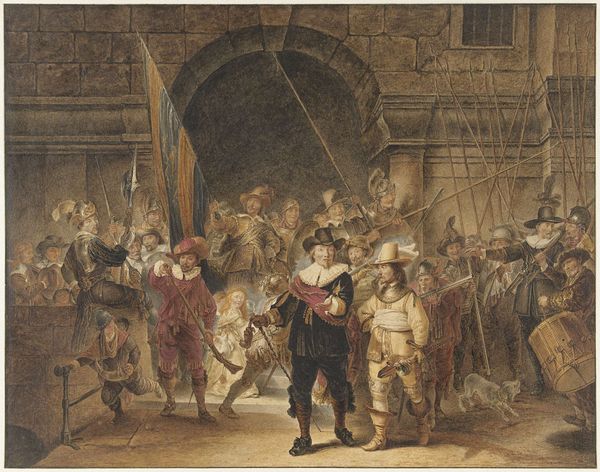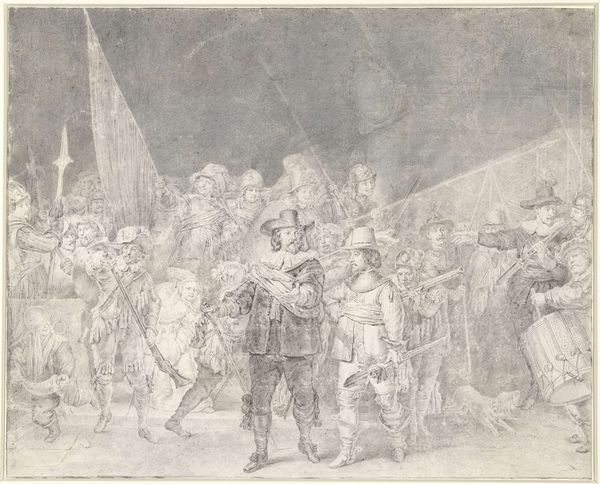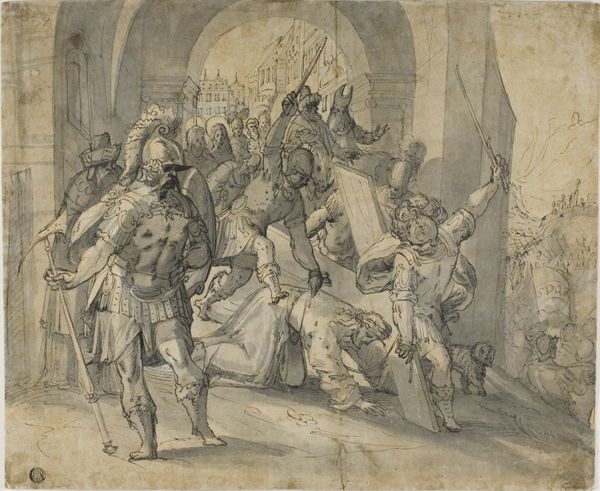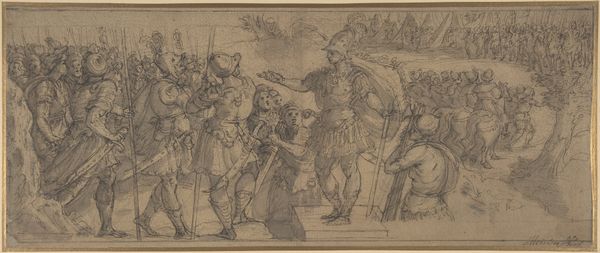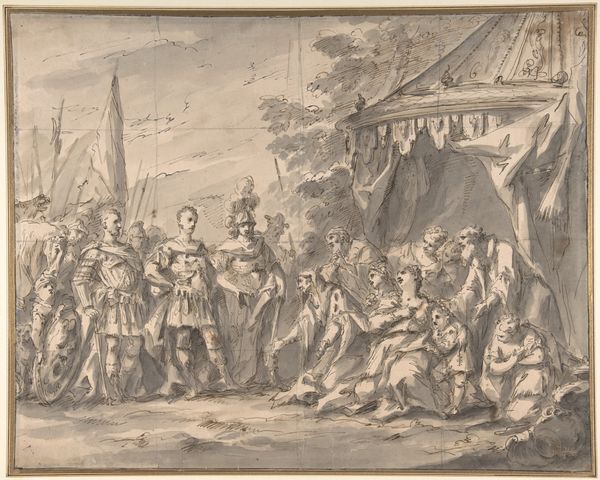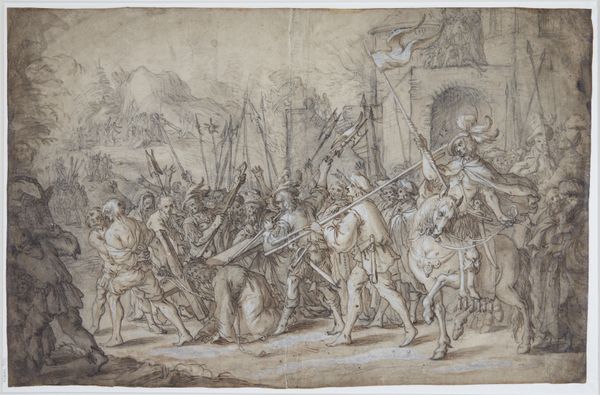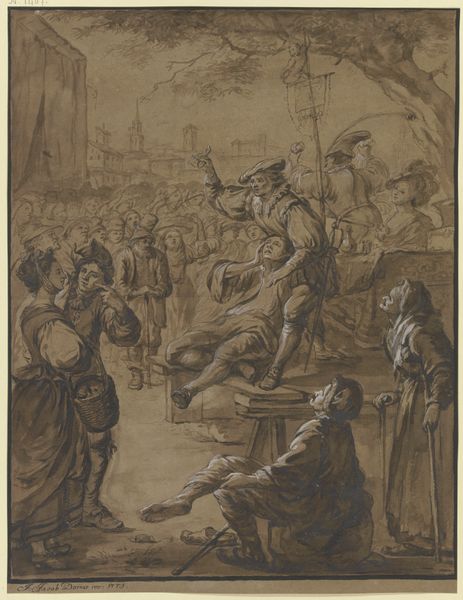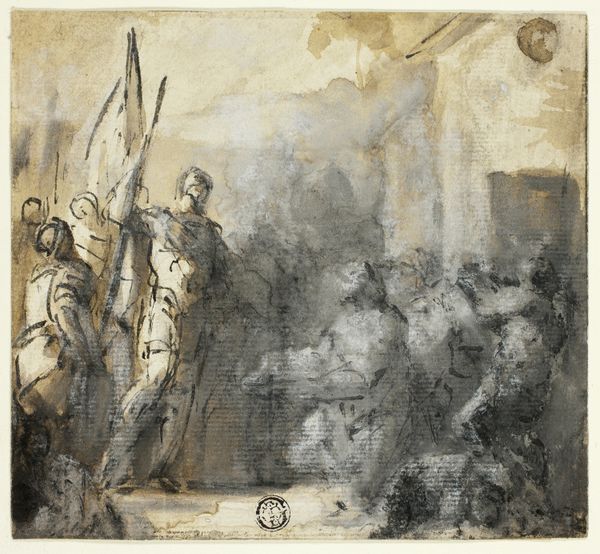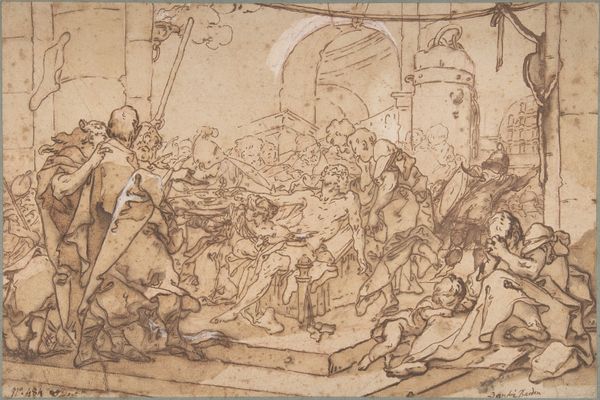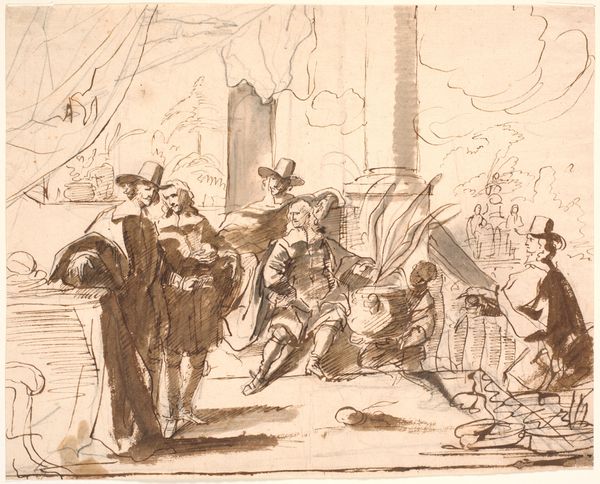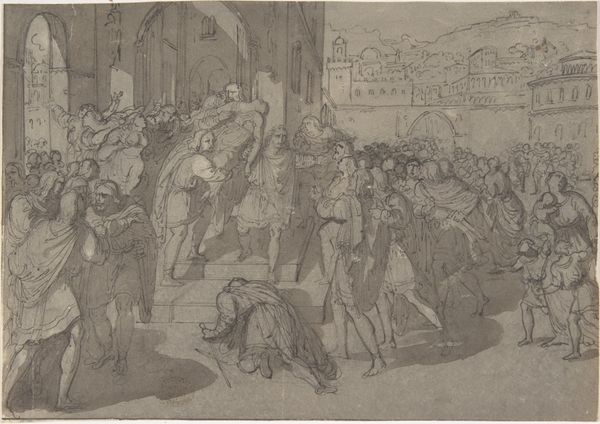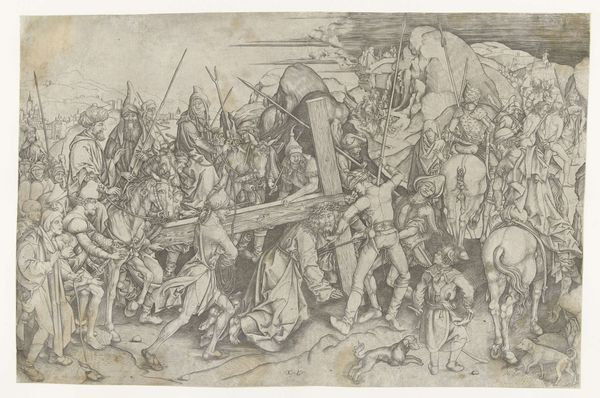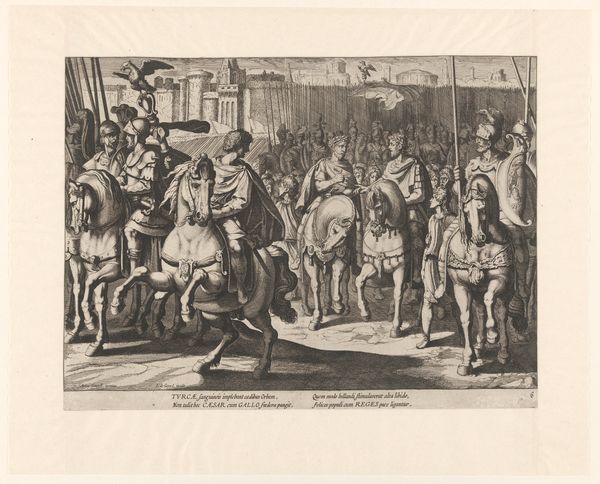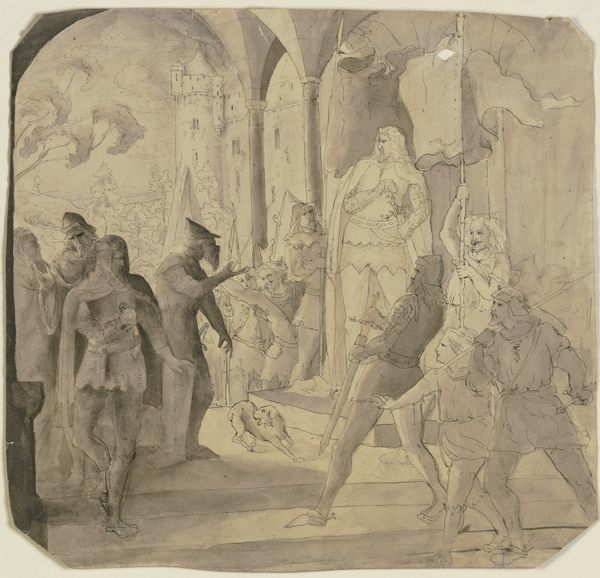
Dimensions: height 147 mm, width 183 mm
Copyright: Rijks Museum: Open Domain
Curator: Here we have a drawing of "The Night Watch" by Johannes Dyserinck, created sometime between 1845 and 1912. It's currently held here at the Rijksmuseum. It looks like Dyserinck employed colored pencil, watercolor and ink. Editor: My first impression? This feels…chaotic. A bit muffled, even. Like I'm peering at this grand historical moment through a rain-streaked window, trying to decipher the action unfolding. There is the clear intention to deliver a figurative scene. But the materials convey something distant and intangible. Curator: Intangible indeed! Consider Dyserinck's employment of line and the techniques from academic art in order to depict a scene so iconic of the Dutch Golden Age, of which we expect a bold and clear approach, akin to baroque art. This almost feels like an act of, shall we say, aesthetic interpretation? It is a study. Note the historical and genre painting at play here; these combine to transform a famous painting into something else. Editor: Interpretation – I like that. Because the original "Night Watch," you know, by Rembrandt, it’s all about power and civic pride, all radiating light. This one? The figures blend and bleed into each other a bit. You get a group portrait but a much more human take. Everyone’s got shadows under their eyes and looks a little damp! And that dog in the front, is it even alive? I wonder, could that mean Dyserinck was trying to inject a sense of time’s passage, or even doubt? Curator: Doubt? A provocative reading! However, if we unpack the work’s formal elements through semiotics, we find his usage of line and shading, for instance, as perhaps revealing something closer to…reflection. The print captures a mood entirely disparate from bombast. The light isn't theatrical, rather a bit flat. Editor: Maybe you're right, it's not doubt, just, you know, a kind of personal filtering of a cultural monument. It's like he is saying: here’s this grand event. But let's consider the daily life, of regular old human beings, a glimpse beyond official histories, almost domesticating that original intent. Curator: That seems an elegant consideration, placing his drawing beyond the dichotomy. So, rather than mere appropriation, this piece truly operates in conversation with its historical ancestor. Editor: Exactly! It's like, "Hey, Rembrandt, great painting. Now, let's look at what’s beyond all the posturing". I enjoyed my first look—thanks for digging into this drawing with me! Curator: An absolute pleasure. It’s always valuable to consider these classical images with fresh eyes and different styles of looking.
Comments
No comments
Be the first to comment and join the conversation on the ultimate creative platform.
